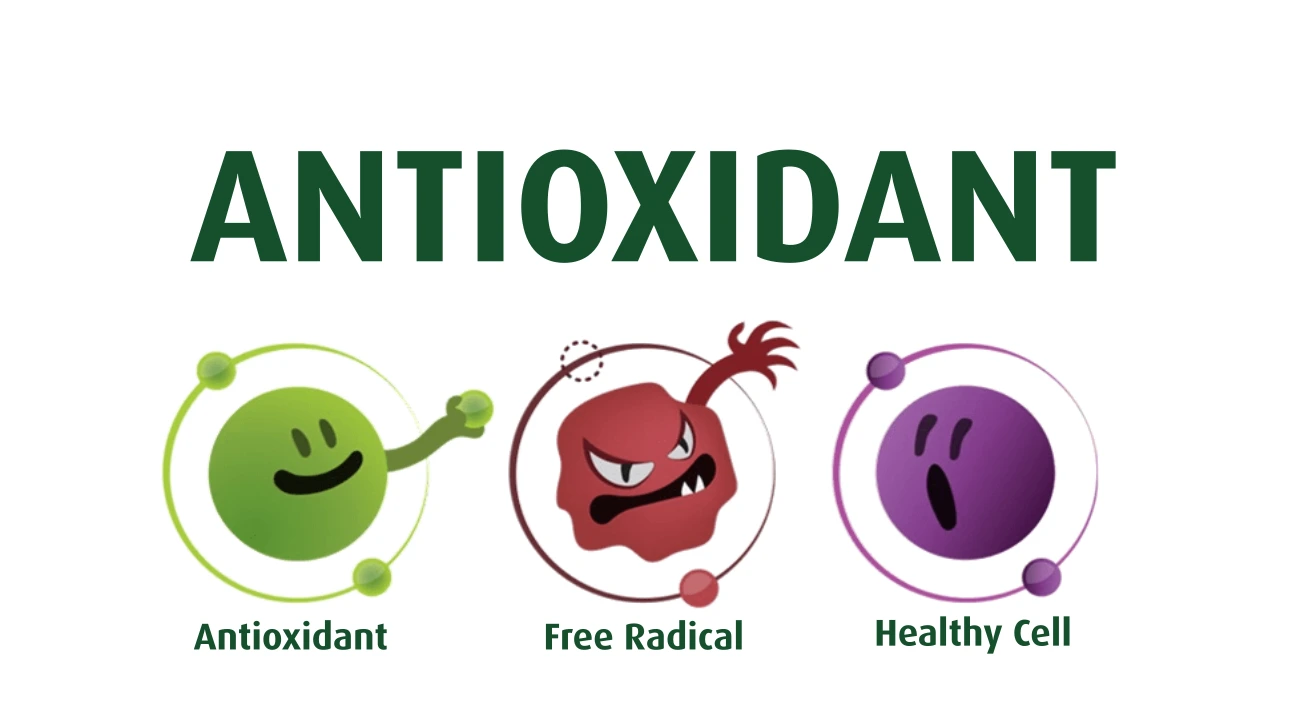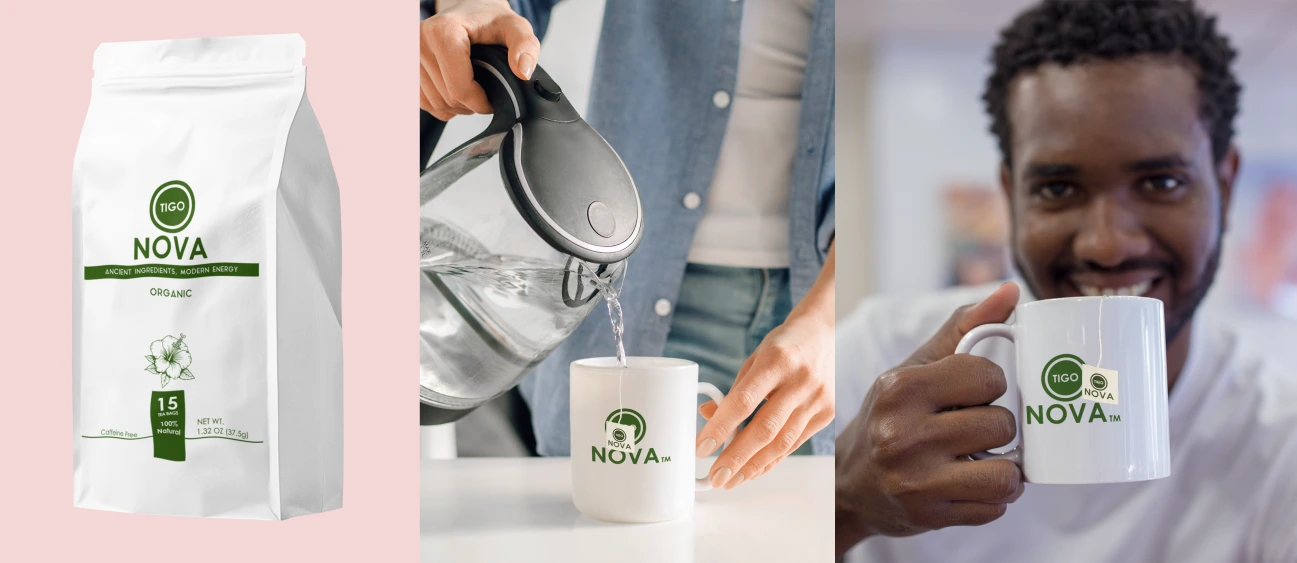
Why Antioxidant Tea Should Be Your Daily Defense Against Aging and Disease
Every day, your body faces an invisible battle. Free radicals—unstable molecules created by everything from pollution to stress—attack your healthy cells, accelerating aging and increasing disease risk. While this cellular damage is unavoidable, there's a simple, enjoyable way to fight back: antioxidant tea.
Among the most potent antioxidant teas available today is hibiscus tea, particularly premium blends like Tigo Nova's Organic Hibiscus Tea with Lime, Ginger, and Alligator Pepper. This vibrant African blend doesn't just offer exceptional flavor, it delivers a concentrated dose of protective compounds that can transform your daily wellness routine.
Understanding Free Radicals and Antioxidants
Think of free radicals as cellular bullies. These unstable molecules are missing an electron, making them highly reactive. To stabilize themselves, they steal electrons from healthy cells, causing damage in the process. This damage, called oxidative stress, contributes to premature aging, heart disease, cancer, and numerous other health conditions.
Antioxidants are your body's natural defenders. These compounds neutralize free radicals by donating electrons without becoming unstable themselves. While your body produces some antioxidants naturally, it often needs reinforcement especially as we age and face increasing environmental stressors.
Why Hibiscus Tea Leads the Antioxidant Revolution
Research consistently shows that hibiscus tea contains higher levels of antioxidants than many popular beverages, including green tea. The secret lies in anthocyanins, the same compounds that give berries their deep colors and hibiscus its stunning ruby hue.
A 2013 study published in the Journal of Nutritional Science found that hibiscus tea contains significantly higher antioxidant activity than black tea, green tea, and even some fruit juices. The researchers attributed this to hibiscus's exceptional concentration of phenolic compounds and anthocyanins.
The Unique Advantage of Premium Hibiscus Blends
Not all hibiscus teas are created equal. Premium blends like Tigo Nova's formula offer superior antioxidant benefits through:
Higher Anthocyanin Concentration: African hibiscus, grown in optimal soil conditions, develops exceptionally high levels of these protective compounds compared to hibiscus from other regions.
Synergistic Ingredients: The addition of ginger, lime, and alligator pepper doesn't just enhance flavor—these ingredients contribute their own antioxidant compounds while potentially increasing the bioavailability of hibiscus's beneficial elements.
Proper Processing: Traditional harvesting and processing methods preserve delicate antioxidant compounds that can be destroyed by conventional commercial processing.
The Science-Backed Health Benefits
Cardiovascular Protection
Multiple studies demonstrate hibiscus tea's remarkable impact on heart health. A 2015 meta-analysis in the Journal of Hypertension analyzed data from five clinical trials and found that hibiscus tea consumption significantly reduced both systolic and diastolic blood pressure.
The antioxidants in hibiscus, particularly anthocyanins, help protect blood vessels from oxidative damage while supporting healthy circulation. When combined with circulation-supporting compounds found in ginger and traditional West African botanicals like alligator pepper, the cardiovascular benefits may be even more pronounced.
Enhanced Immune Function
Your immune system relies heavily on antioxidants to function optimally. Chronic oxidative stress weakens immune responses, making you more susceptible to infections and illnesses.
Research published in Food & Function journal showed that hibiscus extract significantly enhanced immune cell activity in laboratory studies. The high vitamin C content in hibiscus, further boosted by lime in premium blends, provides additional immune support.
Anti-Inflammatory Effects
Chronic inflammation underlies many age-related diseases, from arthritis to Alzheimer's. The antioxidants in hibiscus tea help combat inflammatory processes throughout the body.
A 2014 study in Molecular Nutrition & Food Research found that hibiscus anthocyanins significantly reduced inflammatory markers in human subjects. Ginger, a key component in quality hibiscus blends, adds additional anti-inflammatory compounds that work synergistically with hibiscus.
Metabolic Health Support
Emerging research suggests that hibiscus antioxidants may support healthy metabolism and weight management. A 2014 study published in Food & Function found that hibiscus extract helped improve metabolic parameters in overweight individuals.
Maximizing Your Antioxidant Intake
To get the most antioxidant benefit from your tea:
Choose Quality Sources: Premium blends like Tigo Nova use carefully sourced hibiscus with higher antioxidant concentrations than mass-market options.
Proper Brewing: Steep hibiscus tea for 5-7 minutes in hot water (around 200°F) to extract maximum antioxidants without excessive tannins.
Consistency Matters: Regular consumption provides the most benefit. Aim for 2-3 cups daily.
Consider Cold Brewing: Cold-brewing hibiscus for 8-12 hours can extract different antioxidant compounds while creating a smoother, less acidic flavor.
Beyond the Cup: Additional Benefits of Premium Hibiscus Blends
Quality hibiscus teas offer advantages beyond antioxidant content:
Natural Caffeine-Free Energy: Unlike coffee or traditional tea, hibiscus provides natural vitality without caffeine crashes.
Digestive Support: The inclusion of ginger in premium blends aids digestion and may enhance nutrient absorption.
Hydration Support: The appealing flavor encourages increased fluid intake, supporting overall health.
Versatile Enjoyment: High-quality hibiscus tea tastes excellent hot or cold, making it easy to incorporate into any routine.
Making the Right Choice
When selecting an antioxidant tea, consider these factors:
- Source Quality: Look for organic hibiscus from reputable growing regions
- Processing Methods: Traditional processing preserves more beneficial compounds
- Complementary Ingredients: Added botanicals should enhance, not mask, the hibiscus
- Third-Party Testing: Reputable brands test for both purity and potency
Conclusion: Your Daily Defense Strategy
Incorporating antioxidant-rich hibiscus tea into your daily routine is one of the simplest, most enjoyable ways to support your long-term health. With its exceptional antioxidant profile, proven cardiovascular benefits, and immune-supporting properties, quality hibiscus tea like Tigo Nova's premium blend offers a delicious defense against the daily assault of free radicals.
The vibrant ruby color in your cup isn't just beautiful—it's a visual reminder of the powerful anthocyanins working to protect your health with every sip. In a world full of complex health solutions, sometimes the most effective approach is also the simplest: a daily cup of exceptional antioxidant tea.
References
-
Patel, S. (2013). Hibiscus sabdariffa: An ideal yet under-exploited candidate for nutraceutical applications. Biomedicine & Preventive Nutrition, 3(1), 23-27.
-
Serban, C., Sahebkar, A., Ursoniu, S., Andrica, F., & Banach, M. (2015). Effect of sour tea (Hibiscus sabdariffa L.) on arterial hypertension: a systematic review and meta-analysis of randomized controlled trials. Journal of Hypertension, 33(6), 1119-1127.
-
Mohd-Esa, N., Hern, F. S., Ismail, A., & Yee, C. L. (2010). Antioxidant activity in different parts of roselle (Hibiscus sabdariffa L.) extracts and potential exploitation of the seeds. Food Chemistry, 122(4), 1055-1060.
-
Herranz-López, M., Fernández-Arroyo, S., Pérez-Sanchez, A., Barrajón-Catalán, E., Beltrán-Debón, R., Menéndez, J. A., ... & Micol, V. (2014). Synergism of plant-derived polyphenols in adipogenesis: perspectives and implications. Phytomedicine, 21(10), 1177-1185.
-
Hirunpanich, V., Utaipat, A., Morales, N. P., Bunyapraphatsara, N., Sato, H., Herunsale, A., & Suthisisang, C. (2006). Hypocholesterolemic and antioxidant effects of aqueous extracts from the dried calyx of Hibiscus sabdariffa L. in hypercholesterolemic rats. Journal of Ethnopharmacology, 103(2), 252-260.
-
Chang, Y. C., Huang, K. X., Huang, A. C., Ho, Y. C., & Wang, C. J. (2006). Hibiscus anthocyanins-rich extract inhibited LDL oxidation and oxLDL-mediated macrophages apoptosis. Food and Chemical Toxicology, 44(7), 1015-1023.
-
Bolade, M. K., Oluwalana, I. B., & Ojo, O. (2009). Commercial practice of roselle (Hibiscus sabdariffa L.) beverage production: optimization of hot water extraction and sweetness level. World Journal of Agricultural Sciences, 5(1), 126-131.
-
Da-Costa-Rocha, I., Bonnlaender, B., Sievers, H., Pischel, I., & Heinrich, M. (2014). Hibiscus sabdariffa L.–a phytochemical and pharmacological review. Food Chemistry, 165, 424-443.
